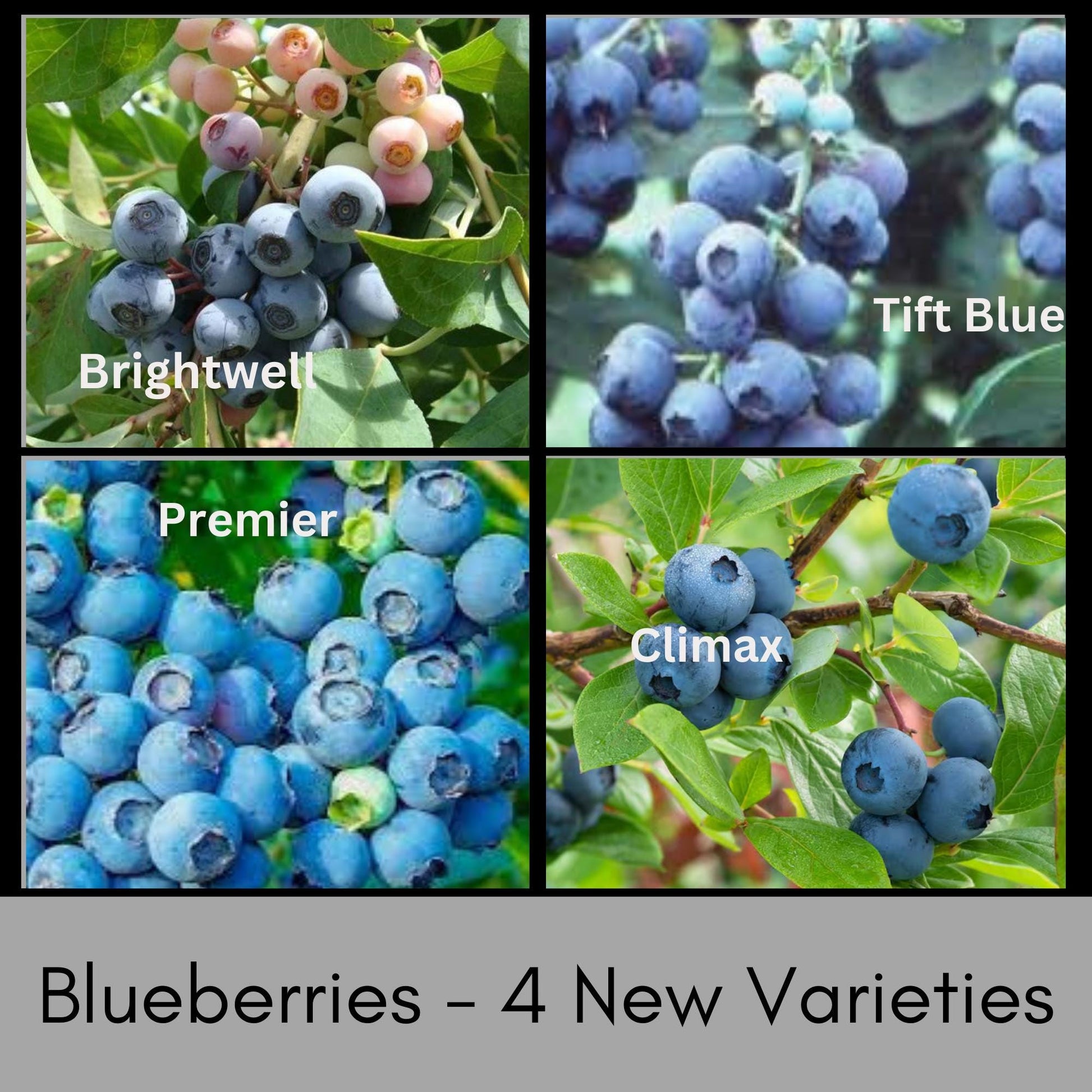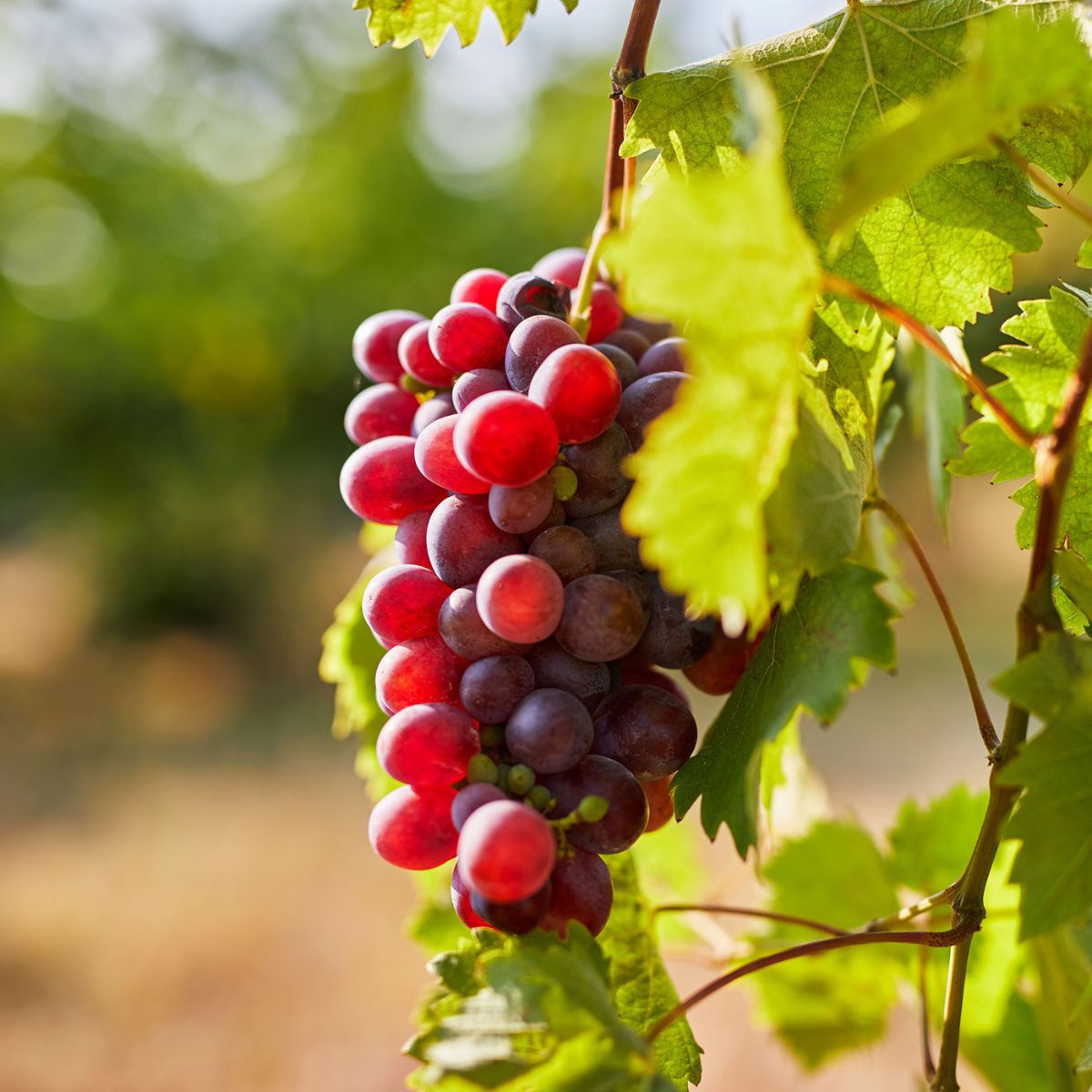As an Amazon Associate, I earn from qualifying purchases.
Are you ready to enjoy homegrown grapes faster than you imagined? Choosing the right grape variety can make all the difference in how quickly you see lush vines and juicy fruit.
Whether you want grapes for fresh eating, juicing, or even winemaking, picking fast-growing grape varieties means you’ll spend less time waiting and more time savoring the rewards. You’ll discover some of the best fast-growing grape types that thrive in various climates, along with easy tips to help your vineyard flourish quickly.
Keep reading to find out how you can turn your garden into a grape lover’s paradise sooner than you think!
Quick Growing Grape Types
Quick growing grape types are perfect for gardeners who want faster results. These grapes grow rapidly and start producing fruit sooner. They suit many climates and are easy to care for. Fast growth means you enjoy fresh grapes in less time.
Concord Grapes
Concord grapes grow quickly and produce dark blue-purple fruit. They have a strong, sweet flavor used for juice and jelly. Concord vines adapt well to different soils and climates. They mature fast, usually bearing fruit in two to three years.
Thompson Seedless
Thompson Seedless grapes are popular table grapes that grow fast. They have green, seedless berries that taste sweet and mild. These grapes also dry well for raisins. Thompson Seedless vines thrive in warm, sunny areas and produce fruit in about two years.
Crimson Seedless
Crimson Seedless grapes feature bright red, seedless berries. These vines grow quickly and yield large clusters. Their crisp texture and sweet taste make them great fresh or in salads. Crimson Seedless grapes prefer warm climates and fruit in two years.
Jupiter Grapes
Jupiter grapes grow fast and produce large, black seedless fruit. They have a sweet flavor and thick skin. Jupiter vines resist diseases well and suit warm regions. Gardeners enjoy their early harvest, usually in two years.
Himrod Grapes
Himrod grapes are white, seedless, and grow quickly on strong vines. They taste sweet and are great for fresh eating or jelly. Himrod thrives in cooler climates and starts fruiting in two years. These grapes also resist common vine diseases.
Canadice Grapes
Canadice grapes grow fast with red, seedless berries. They have a juicy, sweet flavor and firm texture. Canadice vines adapt to various soils and climates. They typically produce fruit in two to three years and resist cold weather well.

Climate And Growth Speed
Climate plays a crucial role in the growth speed of grape varieties. Different grapes thrive in different temperature ranges and weather conditions. Understanding how climate affects growth helps in choosing the right variety. It also ensures quicker harvests and better yields for gardeners and farmers.
Cold-hardy Varieties
Cold-hardy grape varieties grow well in regions with harsh winters. These grapes can survive freezing temperatures and still produce fruit. Varieties like Concord and Frontenac are popular choices. They start growing as soon as the weather warms. Their growth speed is moderate but reliable in cold climates.
Warm Climate Picks
Warm climate grape varieties grow faster due to longer growing seasons. They love heat and sunlight. Examples include Muscadine and Flame Seedless grapes. These grapes ripen quickly and often produce multiple harvests. Warm weather boosts their sugar levels and flavor development.
Impact Of Planting Season
Planting season affects how fast grapevines establish and grow. Planting during dormant periods helps roots settle before growth starts. Early spring planting is ideal in many areas. It gives vines a full growing season to develop. Late planting may slow growth and reduce fruit size.
Planting Tips For Fast Harvest
Planting fast-growing grape varieties requires careful planning. Proper planting helps vines develop quickly. It also leads to an earlier, richer harvest. Follow these simple tips for a successful start.
Choosing Healthy Vines
Select vines with strong, thick stems. Avoid thin or weak-looking plants. Healthy vines resist diseases better. They also grow faster. Look for fresh, green leaves and firm roots. These signs show a good start for your vineyard.
Ideal Planting Time
Plant grapevines during their dormant period. Early spring works well in most regions. This timing helps roots settle before new growth. Avoid planting during hot or freezing weather. Mild temperatures support quick root growth and vine establishment.
Soil And Sunlight Needs
Choose soil that drains well and is rich in nutrients. Grapevines prefer slightly acidic to neutral pH soil. Full sunlight is essential for fast growth. Aim for at least six to eight hours of direct sun daily. Good soil and sunlight boost vine health and fruit production.

Care Practices To Boost Growth
Fast growing grape varieties need special care to reach their full potential. Proper care practices help vines grow faster and produce more fruit. Focusing on watering, fertilizing, pruning, and pest control boosts growth. Healthy vines resist disease and develop strong roots. Follow these key steps to support your grape plants.
Watering And Fertilizing
Grapevines need consistent watering, especially during dry spells. Water deeply once or twice a week to reach roots. Avoid overwatering, which can cause root rot. Use mulch to keep soil moist and cool. Fertilize grapes in early spring with balanced fertilizer. Nitrogen, phosphorus, and potassium support healthy growth. Apply fertilizer again after the first fruit set for best results.
Pruning For Speed
Pruning helps grapes grow quickly by removing old wood. Cut back last year’s growth to encourage new shoots. Prune in late winter or early spring while vines are dormant. Remove weak or damaged branches to focus energy on strong shoots. Proper pruning improves air flow and sunlight exposure. This leads to faster growth and bigger grape clusters.
Pest And Disease Control
Watch grapevines closely for pests like aphids and spider mites. Use insecticidal soap or neem oil to control infestations. Remove fallen leaves and debris to prevent fungal diseases. Treat powdery mildew and black rot early with fungicides. Healthy plants resist pests and diseases better. Regular monitoring keeps your grapevines growing fast and strong.
Harvesting Early And Often
Harvesting early and often is a smart strategy for fast growing grape varieties. It helps keep the grapes fresh and encourages the vines to produce more fruit. Picking grapes at the right time improves taste and texture. Frequent harvesting also prevents overripe grapes from attracting pests or diseases. This method suits gardeners who want a steady supply of grapes throughout the season.
Signs Grapes Are Ready
Grapes show clear signs when they are ready to pick. Their color changes fully to the expected shade, such as deep purple or bright green. The grapes feel firm but not hard. Taste a few grapes for sweetness and flavor. If they taste sour or bitter, wait a few more days. The stems near the grapes start to brown slightly.
Techniques For Early Picking
Pick grapes carefully to avoid damaging the vine. Use sharp scissors or pruning shears for clean cuts. Select clusters with mostly ripe grapes, even if some are still slightly under-ripe. Harvest in the morning when grapes are cool and firm. Avoid pulling grapes off by hand to protect the plant. Store picked grapes in a cool, shaded place immediately.
Maximizing Yield
Regular picking encourages vines to produce new clusters. Remove any damaged or diseased grapes to keep the plant healthy. Thin out very dense grape clusters to improve air flow and sunlight exposure. Water the vines well but avoid overwatering. Add mulch to keep roots moist and soil temperature stable. Use balanced fertilizer to support growth and fruit production.
Popular Fast-growing Grape Products
Popular fast-growing grape products make grape growing easy and rewarding. These products suit gardeners who want quick results. They include varieties that mature fast and vines that fit small spaces. Each product offers unique benefits for home gardens and small farms. Fast growth means earlier harvests and fresh grapes sooner.
Seedless Varieties
Seedless grape varieties are popular among home growers and families. They produce sweet, easy-to-eat grapes without seeds. These grapes grow quickly and start bearing fruit in less time. Common seedless types include Thompson Seedless and Flame Seedless. They thrive in many climates and need little care. Seedless grapes are perfect for snacks, salads, and desserts.
Dwarf Vines
Dwarf grape vines fit small gardens and patios perfectly. Their compact size makes them easy to manage and harvest. These vines grow fast and produce fruit within one to two years. Dwarf vines need less space and can grow in containers. They suit gardeners with limited room but high grape demand. Popular dwarf varieties provide good yields and great flavor.
Home Garden Favorites
Home garden favorites include grape varieties that grow fast and resist pests. Concord and Niagara grapes are examples loved by many gardeners. These grapes produce large, flavorful clusters and ripen early. They adapt well to different soil types and weather. Easy care and quick fruiting make them ideal for beginners. Home gardeners enjoy fresh grapes for eating and homemade juice.
Using Fast-growing Grapes
Fast-growing grape varieties offer quick rewards for gardeners and growers. These grapes reach maturity faster than traditional types, allowing earlier harvests. Their rapid growth suits many uses, from fresh eating to winemaking. Using fast-growing grapes can enhance your garden’s productivity and enjoyment.
Fresh Eating
Fast-growing grapes produce sweet, juicy fruit ideal for fresh eating. Their early ripening means you enjoy fresh grapes sooner. Many varieties have thin skins and firm flesh, perfect for snacking. These grapes often resist pests and diseases, reducing the need for chemicals. Harvesting fresh grapes straight from the vine is a simple pleasure.
Juice And Jelly
Fast-growing grapes are excellent for making juice and jelly. Their high sugar content makes rich, flavorful juice. Quick ripening allows for larger yields early in the season. Preparing jelly from fresh grapes captures their natural taste. Homemade juice and jelly preserve the grape’s freshness and nutrients.
Winemaking Basics
Fast-growing grapes can be used to make homemade wine. Their early harvest helps start fermentation sooner. Choose varieties with good balance of sugar and acidity. Crush the grapes to extract juice for fermentation. Monitor temperature and yeast activity to ensure quality wine. Patience is key during the winemaking process.

Frequently Asked Questions
What Month Should You Plant Grapes?
Plant grapes during late winter to early spring, ideally in March, while vines are dormant. Choose healthy, pencil-thick stems to withstand cold. This timing promotes strong growth and better yields.
How Much Wine Will A 5 Gallon Bucket Of Grapes Make?
A 5-gallon bucket of grapes typically produces about 3 to 4 gallons of wine. Yield varies by grape type and ripeness.
What Are The Best Tasting Grapes To Grow?
The best-tasting grapes to grow include Concord, Thompson Seedless, and Crimson Seedless. Jupiter, Himrod, and Canadice also offer excellent flavor. Choose varieties suited to your local climate for optimal taste and growth.
What Are The 7 Noble Grapes?
The 7 noble grapes are Cabernet Sauvignon, Merlot, Pinot Noir, Syrah, Chardonnay, Sauvignon Blanc, and Riesling. These varieties dominate fine wine production worldwide.
What Are The Fastest Growing Grape Varieties To Plant?
Concord, Niagara, and Himrod are among the fastest growing grape varieties.
Conclusion
Fast growing grape varieties offer quick fruit and easy care. They suit beginners and experienced gardeners alike. Choosing the right type depends on climate and space. Regular watering and sunlight help grapes grow strong and healthy. Harvest time brings fresh, tasty grapes for eating or cooking.
Growing these vines can be a rewarding and enjoyable hobby. Try planting one and enjoy sweet grapes sooner than you think.
